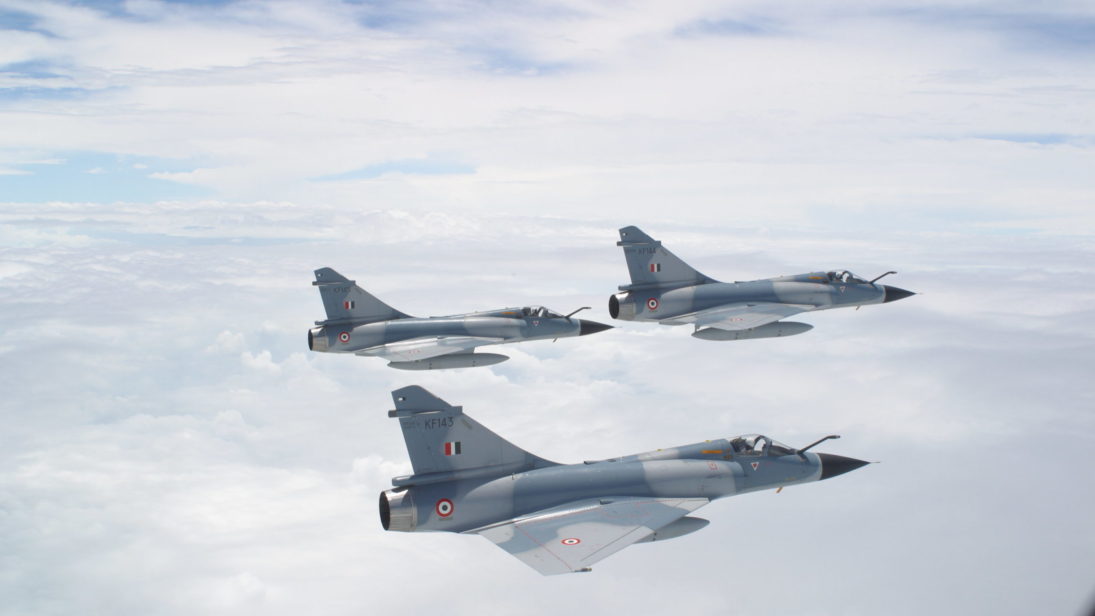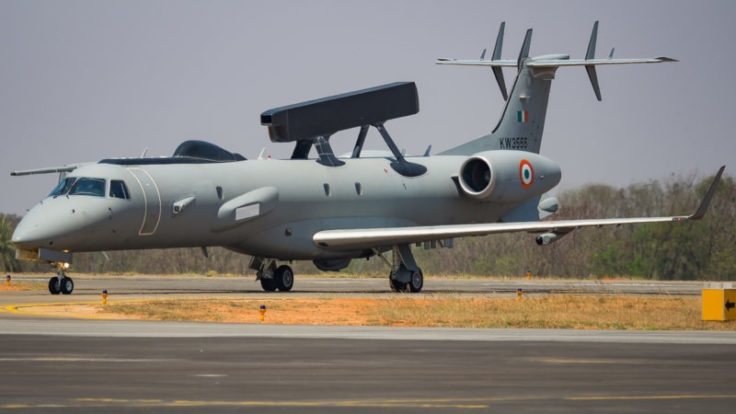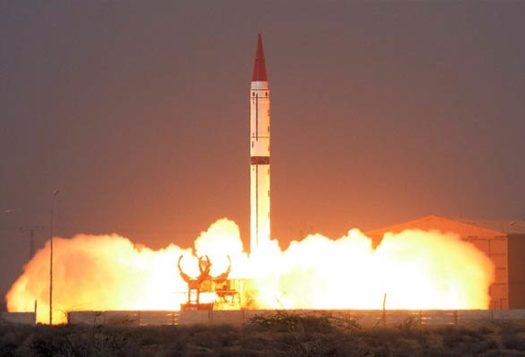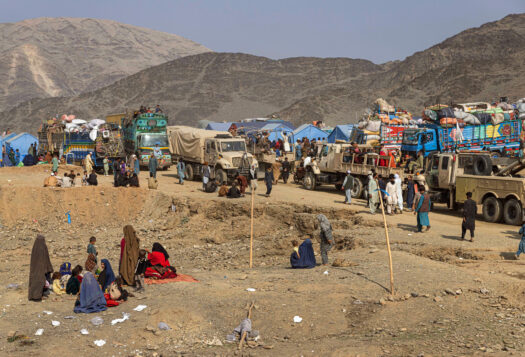
A year after the crisis between India and Pakistan last February, the two nations continue to vie to set the conflict’s narrative, and many of the lessons that the next-door rivals took away from the episode remain unclear. Despite this, the crisis cemented a shift in New Delhi’s response to military provocations, a shift that began in the wake of the 2016 Uri attack and has seen India open up the conventional space for further probing.
After his election in 2014, Prime Minister Narendra Modi made an effort to reach out to Pakistan—he invited Pakistan’s leader Nawaz Sharif to his swearing-in ceremony, made an an impromptu trip to Lahore, and even offered a joint investigation into the 2016 Pathankot attack. However, the 2016 Uri attack served as the final nail in the coffin for this soft approach. Instead, the Modi government responded to the Uri attack with a tactical operation along the Line of Control (LoC) and publicly acknowledged them as “surgical strikes.” This response marked a shift towards a sustained hard policy that involved integrating military force into policy vis-à-vis Pakistan for retaliatory action. The Indian response in the aftermath of the Pulwama attack was an extension of the response to the Uri attack, which have together cemented an Indian response template for major provocations. Following the Balakot airstrikes, both the Pakistan Air Force (PAF) and the Indian Air Force (IAF) are looking to plug the capability gaps highlighted during the crisis. The trajectory of the Pulwama/Balakot crisis further suggests that the prospects for vertical escalation are more likely in a future crisis and that each side views conventional deterrence as pivotal to crisis stability.
Contrasting Balakot with Uri
Following the Balakot air strikes, both the Pakistan Air Force (PAF) and the Indian Air Force (IAF) are looking to plug the capability gaps highlighted during the crisis. The trajectory of the Pulwama/Balakot crisis further suggests that the prospects for vertical escalation are more likely in a future crisis and that each side views conventional deterrence as pivotal to crisis stability.
The evolution of crisis dynamics between India and Pakistan from the post-Uri strikes to the airstrikes at Balakot can offer some insights into escalation pathways for a future conflict. In the aftermath of the “surgical strikes” conducted by the army in 2016, India controlled the narrative by conducting a briefing emphasizing the preemptive nature and limited objectives of the operation. After Pakistan’s subsequent denials that any such operations had taken place, the crisis was diffused. India used this preemptive argument again, for the Balakot strikes, but Pakistan did not respond in exactly the same way. Although Pakistan once again questioned the efficacy of the Indian strikes, it one-upped India by putting information out in the public domain which, although not always accurate, created a narrative that India was, at best, reactive to.
An important point to note is that a characteristic common to the strikes post Uri and the Balakot strikes, as well as Pakistan’s counterescalation, is that all of these ingresses were made across the LoC rather than the International Border (IB), which limits the potential for horizontal escalation.
After Indian airstrikes at Jaba Top in Balakot, Pakistan’s first reaction similar to the “surgical strikes” after the Uri attack was to dismiss that India had hit anything of significance. However, within hours of initially dismissing the IAF strikes, the Pakistan Army and Prime Minister Imran Khan declared that retaliation was certain. Additionally, Pakistan engaged in nuclear signaling by convening a meeting of the National Command Authority on February 26. A day later, the PAF responded with conventional airstrikes of its own. It is possible that Pakistan assessed the IAF strikes as having crossed a spatial threshold by attacking mainland territory (since Balakot is quite inland from the LoC) and saw the IAF’s use of air power as vertically escalatory, forcing PAF to reconsider its response.
Although the IAF maintained a full alert stance following its airstrikes at Balakot, it is quite likely that they did not anticipate, and so were not fully prepared for, the scale of Pakistan’s counterescalation response, given Islamabad’s initial denial. This perhaps explains the fact that when the PAF decided to counterattack, they were able to create a local numerical superiority of 24 fighter-jets—the IAF’s Combat Air Patrol was only comprised of eight jets—and why the lack of a coordinated defense from India resulted in it shooting down its own chopper. Whether this miscalculation was a product of circumstances or deliberately infused by Pakistan through its initial denial is not clear at the moment. Hitherto, most analysts have felt that the target hit matters more than the means of delivery in escalation prospects. However, this line of thought proved wrong in Balakot since Pakistan responded with an airstrike to re-establish lost aerial deterrence despite claiming that the IAF’s strike had not done damage. Overall, while the Balakot airstrikes were aimed at Pakistan proper, the fact that both Indian and Pakistani airstrikes were carried out across the LoC with each working to establish air superiority indicates that the main escalation was happening vertically rather than horizontally. This suggests that prospects for vertical escalation in a future crisis are higher than for horizontal escalation.

Capability and Deterrence: Lessons Learnt by India and Pakistan
Finally, irrespective of the level of training, modern systems, and improved protocols, mistakes are still very likely in the use of air power in such a high pressure environment. Therefore, it is important that that the international community steps in to act against the radical militant outfits that are at the root of such crises.
Debates surrounding the efficacy with which operations were conducted as well as claims and counter-claims have led to military learning for both sides after the crisis. For instance, Pakistan claimed an Su-30 MKI kill while India claimed an F-16 kill, but neither country could provide any conclusive evidence that they scored these hits. Questions about the accuracy of the Indian strike and later about the military’s functional capabilities seem to have pushed India to acquire new systems to address any gaps. For instance, the IAF is procuring Software Defined Radios to counter jamming in the battle zone, Beyond Visual Range (BVR) missiles, secure data links, and an assortment of air-to-air missiles for BVR combat. The IAF is also in the process of creating a singular air defense command and inducting more Airborne Early Warning and Control (AEW&C) aircraft along with a variety of high-end air defense systems to counter the PAF’s AEW&C platforms, which provided it with a better air picture during the recent crisis. On the other hand, the PAF seems to have learnt that there are chinks in its air defense armor since the IAF was able to shallow-penetrate Pakistan’s airspace. Its recent move to test stand-off munition delivery capabilities and interest in procurement of long-range air defense systems provide evidence of this thinking. However, this capability race between India and Pakistan is likely to be in favor of the former for the medium to long term given India’s larger resource base.
Following these recent crises, both India and Pakistan seem to have taken away the lesson that bilateral conventional deterrence will be key to future crisis outcomes. Analysts from both sides have questioned the deterrence value of Balakot because the efficacy of the Indian strike and its air power capabilities were seen as lacking. However, this is an incomplete analysis because the strikes conveyed the IAF’s intent as well as established a response template for grave provocations, as discussed earlier. Such skirmishes are not reflective of India’s overall capability or capacity for a sustained conflict. Going forward, it is highly likely that India will respond militarily across the LoC after every major militant attack, and put the onus of counterescalation on Pakistan. Some have suggested that the PAF’s matching response to Indian airstrikes enhances Pakistan’s conventional deterrent. However, ironically, this argument allows India to further probe the conventional conflict space despite Pakistan’s ambiguous first-use nuclear doctrine that projects a very low nuclear threshold.
In addition, conclusions in some Indian circles that limited but large scale conventional operations of the sort envisaged in the Cold Start Doctrine are now acceptable and would remain below the nuclear threshold just because Pakistan responded conventionally to the Balakot airstrikes are premature. A Cold Start-style military operation has more escalatory potential since it is more inextricably linked with nuclear deterrence as compared to one-off, small-scale limited strikes such as Balakot because they directly engage military targets over substantial space and time. However, Pakistan’s response to the Balakot airstrikes has shown that India’s logic of retaliating against proxy targets such as militant camps instead of Pakistani military targets in order to limit escalatory potential also did not work—Pakistan responded to India’s attack on a militant camp as if the attack was carried out against Pakistan’s own military, and it targeted India’s military directly with its conventional firepower. Given this and the idea that direct military targeting along the LoC usually remains localized and does not lead to escalation, India could consider taking out less sensitive military targets in Pakistan in response to future provocations using the narrative publicly that these targets are militant camps. Thus, the distinction between military and non-military targets could come under stress in the next crisis.
Finally, irrespective of the level of training, modern systems, and improved protocols, mistakes are still very likely in the use of air power in such a high pressure environment. This has been evidenced in the cases of the IAF chopper taken down by Indian surface-to-air missiles (SAMs), a civilian Ukrainian plane shot down by Iranian SAMs earlier this year, and a U.S. air force airstrike against an Afghan hospital mistaking it for a militant base in 2016. The potential for inadvertent or accidental escalation is high. Therefore, it is important that that the international community steps in to act against the radical militant outfits that are at the root of such crises.
The views expressed above are the author’s own and do not necessarily reflect those of the organizations to which he is affiliated.
Editor’s note: SAV contributors look back at the crisis between India and Pakistan last February that saw them exchange tit-for-tat airstrikes, and assess the key lessons taken away by both sides. Read the Pakistani perspective on this episode here.
***
Click here to read this article in Urdu.
Image 1: Government of India
Image 2: Venkat Mangudi via Flickr


